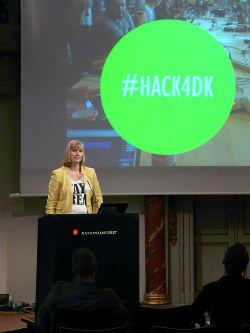CARARE Final Conference – How Did We Do?
The CARARE project will come to a close at the end of January and has just held its final conference showcasing some great progress and achievements. Guest blogger, Kate Fernie, gives us the low-down.
The CARARE Project launched in February 2010 with the aim of supplying 2 million items on archaeology and architecture to Europeana and of bringing the historical cultural environment to end-users. By November 2012, over 1.3 million records have been published and more content is on its way to Europeana in the next two months. The project is set to exceed its content target, but what else have we achieved?
At the two-day Final Policy Conference held on the 8-9 November, it was evident that the CARARE content providers were delighted to be able to share their enthusiasm and knowledge with Europeana end-users, and provide access to content such as protected buildings in Brussels, ancient forts and old images from Lithuania, 3D models of Greek churches, icons, archaeological monuments from Denmark, and so much more.
It goes further than that… CARARE and Europeana have stimulated other initiatives. For example, the Cyprus Research and Educational Foundation told us about a project with the Elementary School at Pyrga where they worked with teachers to show the children how to investigate their local heritage, along the way photographing their church and creating a 3D model. The results of a developer hackathon, Hack4DK, showed the popularity of these events, with 25 developers taking part. The winning apps included 'Kulturarv' and ‘Adopt a Mound’. Kulturarv was developed after the event to produce a fully working augmented reality for anyone wishing to explore Denmark’s historic past with an Android phone.

Kristine Hoff Meyer of the Culture Agency of Denmark introducing the session on Hack4DK - photo by Sheena Bassett.
We also heard about exciting initiatives from the Arts Council Norway such as ‘Heritage Here’, which is bringing information about monuments, buildings and natural sites to mobiles and tablets. '1001 Stories About Denmark' illustrated both the power of people’s connections with historic places and successful use of social media. We heard Wiki Loves Monuments has become global and is beating its own world record for the number of photographs captured by members of the public in a campaign. EuroClio, the association of European History Educators, spoke about possibilities for future collaborations. It was clear from delegates that cultural heritage institutions are focused upon adapting to this new and changing world to exploit the full potential of their content while grappling with issues such as sustainability and IPR (Intellectual Property Rights).
So, back to CARARE… yes, I think we can say we have made a difference. CARARE has helped Europeana to introduce 3D content to its users, and it is the geo-spatial co-ordinates available in much of our content that forms the basis of many of the mobile apps now in development following the move of Europeana metadata into the public domain.
So, what happens next? We have a lot more CARARE content still to be uploaded before the project ends on 31 January 2013, and we will be unveiling a geo-browser based on CARARE content and the Europeana API before then.
This isn’t the end – a project called 3D-ICONS, an off-shoot of CARARE, began earlier this year. 3D-ICONS is digitising a series of architectural and archaeological masterpieces of world and European cultural significance and will make 3D models and related digital content available for Europeana users. And in January 2013 a project called LoCloud will start, this is a follow-on from Europeana Local and CARARE and will be aggregating local history and heritage content for Europeana using cloud technologies.
